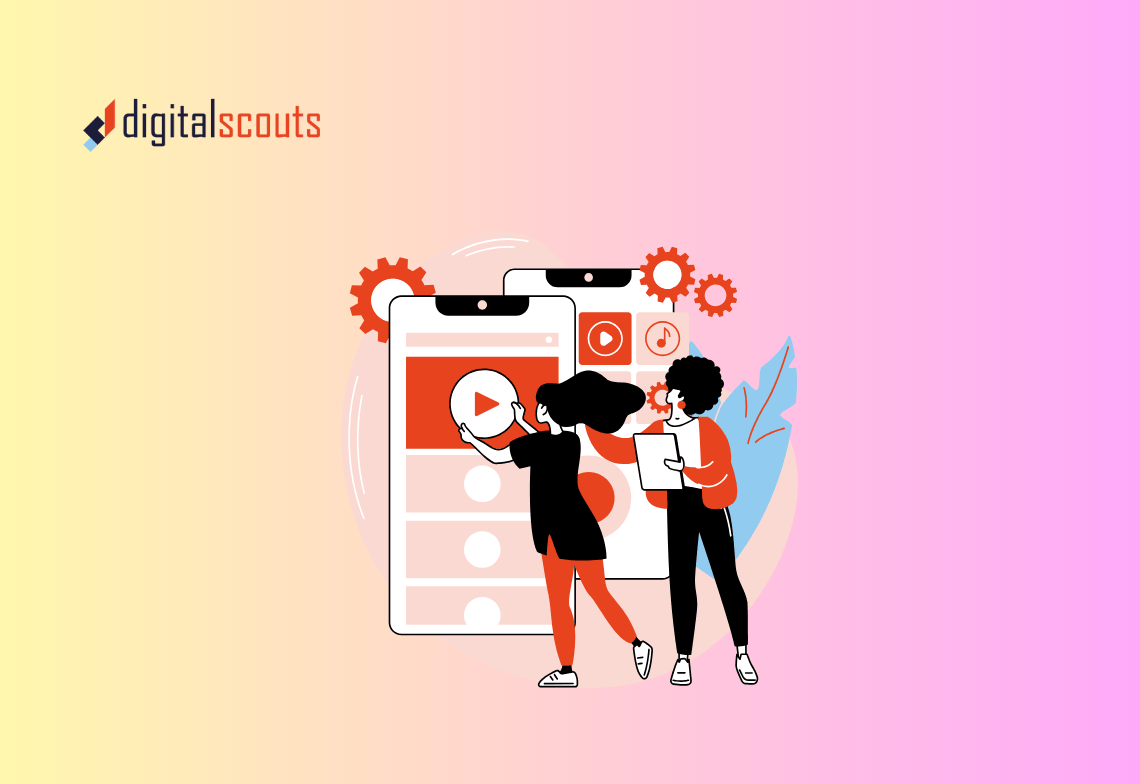Generating leads is not the hard part in B2B. Turning interest into sales readiness is where most funnels slow down, and it usually comes back to alignment across marketing, sales and service as outlined in our RevOps guide. Many Marketing Qualified Leads look promising in reports but never progress to a Sales Qualified Lead because nurturing is too generic, too slow, or disconnected from sales.
If you want a faster path from MQL to SQL, you need a system that combines segmentation, content, automation, and clear handoffs. This article shows how to build that system and how to use HubSpot and marketing automation to operationalise it.
Why the MQL to SQL handoff breaks
B2B journeys are long and non linear. Buyers research in private, switch devices, and consult peers before they ever speak to a rep. A typical path includes a comparison search, a webinar, a pricing page visit, a case study, and a product walkthrough. Some of this is tracked. Some of it is not.
The most common reasons MQLs do not become SQLs are simple, and fixing them starts with clear definitions and reporting using the right marketing KPIs and attribution. Scoring models focus on volume rather than intent. Nurture programs deliver the same stream of content to everyone. Sales is asked to call too early. Data is split across tools, so context is lost during handoff.
Fixing this requires clear definitions, a lead scoring model that reflects buying signals, and automation that reacts to behaviour in real time.
Define MQL and SQL with sales and make it measurable
Start with shared definitions. An MQL is a lead that fits your ideal customer profile and has shown interest through specific actions such as a content download or a webinar registration. An SQL is a lead that shows clear intent and is ready for a sales conversation. Examples include multiple high intent actions in a short window, a pricing page visit combined with a demo request, or engagement from multiple stakeholders in the same account.
Write the definitions down. List the qualifying actions and the minimum score. Agree the handoff rules and the feedback loop. This alignment gives automation a target to aim for and gives sales confidence in the quality of passed leads.
Build a lead scoring model that finds sales readiness
A strong scoring model blends fit and intent, and can be enhanced with practical AI in B2B marketing to predict sales readiness from real signals. In HubSpot or your marketing automation platform, use two dimensions.
Fit score: Industry, company size, tech stack, geographic fit, and role seniority.
Intent score: Pages viewed, forms completed, email engagement, webinar attendance, repeat visits, and return frequency.
Treat a visit to the pricing page, a product video view, and a demo request as high value signals. Reduce scores over time if a contact goes inactive. Review close won and close lost data monthly to refine the model. The goal is not to be perfect. The goal is to be directionally right and consistently applied.
Map content to the journey and give every touch a next step
Content moves people forward when it answers the question they have right now. Map your assets to three simple stages.
Awareness: problem framing and education, supported by solid SEO strategies so your answers show when buyers research.
Consideration: solution fit and proof delivered through consistent email strategy, case studies, comparison pages and webinars.
Decision: Validation and commitment. Use demos, ROI calculators, implementation guides, and customer stories with outcomes.
Every asset needs a clear next step that matches the stage. Awareness content should point to a relevant case study or webinar. Consideration content should point to a demo or ROI tool. Decision content should point to a fast path to schedule time with sales.
Use marketing automation to react to behaviour in real time
Static drip sequences are easy to set up but they do not reflect how buyers behave; start with HubSpot CRM fundamentals so properties, lists and workflows can power behaviour-based nurture..
In HubSpot, create workflows for the following moments.
- Pricing interest: Multiple pricing or plan page views within seven days. Send a short email from the assigned rep with a scheduling link and serve a retargeting ad that highlights implementation and onboarding.
- Solution research: A download of a topic cluster whitepaper. Enrol the lead in a track that includes a related case study, a webinar replay, and a product walkthrough.
- Re engagement: A once engaged lead goes quiet for thirty days. Send a short check in, surface a relevant resource, and pause further emails if there is no response.
- Buying committee activity: Two or more contacts from the same domain engage in a short window. Notify the account owner, add the contacts to an account nurture list, and tailor content by role.
Workflows should update lifecycle stages, notify owners, and add or remove leads from audiences automatically. This is where marketing automation turns intent signals into momentum, especially when unified data makes HubSpot’s AI actually work.
Personalise with dynamic content and simple tokens
Personalised nurturing does not need to be complex to be effective. Use tokens and dynamic modules to change headlines, case study examples, and calls to action based on industry, role, or behaviour. Show healthcare proof points to healthcare leads. Show enterprise onboarding details to enterprise leads. Keep the message short and relevant. The goal is to make every touch feel considered.
Add account based nurturing for high value targets
For named accounts, treat the account as a market of one. Build an account plan with sales. Map stakeholders and their likely questions. Send tailored sequences by role, coordinate paid and organic touchpoints, and use a shared account dashboard that tracks engagement across contacts. Measure progress by account engagement score, meetings set, and opportunities created.
Use retargeting to maintain momentum between touches
Leads do not live in your inbox. Use LinkedIn and Google retargeting to keep your message present as they move across the web. Match ad content to the next logical step rather than repeating awareness messages. Someone who watched a demo should see customer proof and implementation content. Someone who downloaded a guide should see a case study and webinar invite.
Measure what matters and iterate
You do not need a complex analytics stack to improve conversion; use our B2B KPI and attribution guide as a baseline for stage-by-stage reporting.
- MQL to SQL conversion rate
- Time to SQL
- Meetings booked from nurture
- Opportunity rate from nurtured leads
- Revenue from nurtured opportunities
- Sales cycle length for nurtured deals versus non nurtured deals
Review performance monthly with sales. Identify where leads stall and whether content or criteria need adjustment. Use simple A B tests on subject lines, calls to action, and landing page copy. Small, steady improvements compound.
A simple HubSpot setup that operationalises this plan
If you use HubSpot, the following elements will help you convert MQLs to SQLs with less friction.
- Lifecycle stages and definitions configured in Properties
- Fit and intent scoring using HubSpot Score
- Behaviour based workflows for pricing interest, solution research, re engagement, and buying committee activity
- Deal stage exit criteria documented in the pipeline
- Dynamic email and page modules that switch case studies and proof by industry or segment
- Lists and audiences connected to LinkedIn and Google for retargeting
- Dashboards that surface MQL to SQL rate, time to SQL, and opportunity rate from nurtured leads
This setup gives you a repeatable way to move qualified interest to sales readiness and to report the impact.
Build trust by aligning automation with people
Automation accelerates the process, but people create trust. Make sure every automated path includes a personal touch at the right time. A short, plain email from a rep after high intent behaviour. A quick thanks after a webinar with a useful link rather than a pitch. A real response when someone asks a question. Small signals of care lead to stronger meetings and better deals.
How Digitalscouts helps B2B teams convert more leads into revenue
At Digitalscouts, we design and implement lead nurturing systems that turn engagement into qualified pipeline. We set up marketing automation, build HubSpot lead nurturing workflows, map content to the journey, and connect scoring to clear handoffs.
We work with marketing and RevOps teams to turn data into clear, actionable stories. We apply AI where it improves signal and speed, whether that means improving lead quality, optimising funnel conversion, or increasing marketing sourced revenue.
Ready to convert more MQLs into SQLs and make your funnel easier to run
Talk to us: https://digitalscouts.co/contact
Frequently Asked Questions
About Author
Ashish is a B2B growth strategist who helps scaleups align marketing and sales through Account-Based Marketing (ABM), RevOps, and automation. At DigitalScouts, he builds scalable content engines, streamlines lead flows with HubSpot, and runs targeted GTM programs to drive predictable pipeline. He regularly shares insights on using AI and automation to power ABM and accelerate complex buyer journeys.








